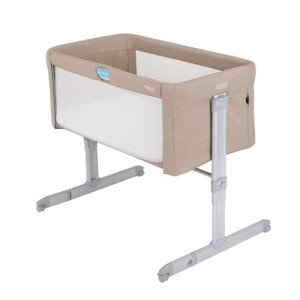Transitioning from Baby Cot to Bed: A Comprehensive Guide for Parents
The journey from a baby cot to a bed marks a considerable turning point in a kid's advancement. It represents self-reliance and an action toward maturing. However, this shift can frequently be intimidating for both parents and children. Comprehending the procedure, the best timing, and how to make the shift smoother can considerably help in this journey. This short article checks out the essentials to think about when transitioning your child from a cot to a bed, consisting of common FAQs, suggestions, and a structured plan to ensure the process is as smooth as possible.
Why Transition from a Cot to a Bed?
Developmental Milestones
Transitioning to a bed is typically prompted by several aspects:
- Physical Growth: As children grow, they outgrow their cots. The typical size for a convertible cot is usually indicated for infants as much as 3 or 4 years old.
- Cognitive Development: As toddlers end up being more curious and familiar with their environments, they may try to climb out of their cots, posing safety threats.
- Potty Training: Once a child is potty trained, they might require easier access to the restroom, which a bed can help with.
- Brother or sisters: The arrival of a brand-new sibling can also demand this transition, as the cot might require to be maximized.
When to Make the Transition
There is no one-size-fits-all answer to when a child should transition from a cot to a bed. However, here are some indications that it may be time:
- Climbing Out: If the child is trying to climb up out frequently.
- Age Consideration: Many specialists suggest this shift around the age of 2 to 3 years, although every kid is distinct.
- Required for Independence: Children might express a desire for a big-kid bed.
Types of Beds Suitable for Toddlers
Not all beds are created equal when it comes to young children. Here's a breakdown of appropriate bed types:
| Bed Type | Description | Pros | Cons |
|---|---|---|---|
| Young child Bed | Smaller sized, lower to the ground, typically with side rails. | Size-appropriate for young children; stability. | Restricted lifespan as they outgrow quickly. |
| Single Bed | Standard size bed meant for older children. | Lasts longer; can be used for many years. | May be too big for a toddler; threat of falling. |
| Convertible Crib | Crib that transforms into a toddler bed. | Versatile; saves cash in the long run. | Can be expensive; some may not offer full-sized options. |
| Loft Bed | Raised bed with area underneath for play or storage. | Optimizes area; fun for kids. | Not suitable for extremely children; safety concerns. |
Actions to Transition Smoothly
Transitioning to a bed can be made simpler with cautious preparation. Here's a step-by-step guide:
1. Prepare the Space
- Select a Location: Decide where the bed will be positioned.
- Childproof the Room: Since kids are naturally curious, make sure that furniture is stable, sharp edges are covered, and hazardous items are out of reach.
- Keep Familiar Items: Retain preferred toys and bed linen to offer comfort in the new environment.
2. Introduce the Bed
- Include Your Child: Let your kid aid pick out their bed or bed linen to produce enjoyment.
- Describe the Transition: Make them comprehend that they are becoming a big kid by having a big-kid bed. Usage motivating language.
3. Make the Swap
- Bedtime Routine: Keep the bedtime regular constant. This develops familiarity and comfort throughout the transition.
- Support: Offer them peace of mind however avoid being overly protective; it's essential to motivate self-reliance.
4. Address Fears and Concerns
- Speak about Fears: Children may have worries of falling or the dark; talk about these openly.
- Enhance Safety: Use guard rails on the bed at first and discuss what to expect during the night.
5. Monitor and Adapt
- Be Patient: It might take some time for your kid to adjust completely.
- Stay Consistent: Maintain the nighttime routine, even when problems emerge.
FAQs Regarding Transitioning from Cot to Bed
Q1: How long does the shift from a cot to a bed typically take?
A1: The transition can vary considerably amongst children-- ranging from a couple of days to a couple of weeks-- as they get used to sleeping in a new area.
Q2: Should I buy an unique young child bed?
A2: Investing in a toddler bed can make the transition easier because they are created with safety in mind; however, if you choose to go directly to a single bed, that can work too with the best security measures.
Q3: What if my child keeps rising?
A3: This is regular! Motivate Cheap Cots to remain in bed and develop positive support by rewarding them for remaining in bed through the night.
Q4: Is it fine to transition to a big bed too early?
A4: Transitioning too early can lead to sleep disturbances. It's important to evaluate the readiness of the child based upon their signs and advancement.
Transitioning from a baby cot to a bed is a considerable step for both kids and moms and dads. With thoughtful preparation and understanding of the kid's requirements, moms and dads can make the shift smoother and more satisfying. By recognizing when to make the shift, comprehending the kinds of beds offered, and keeping a consistent regimen, parents can relieve worries and foster a sense of security for their youngster during this amazing new chapter. Ultimately, supplemental resources is different, and patience is crucial in making this journey a positive experience.
